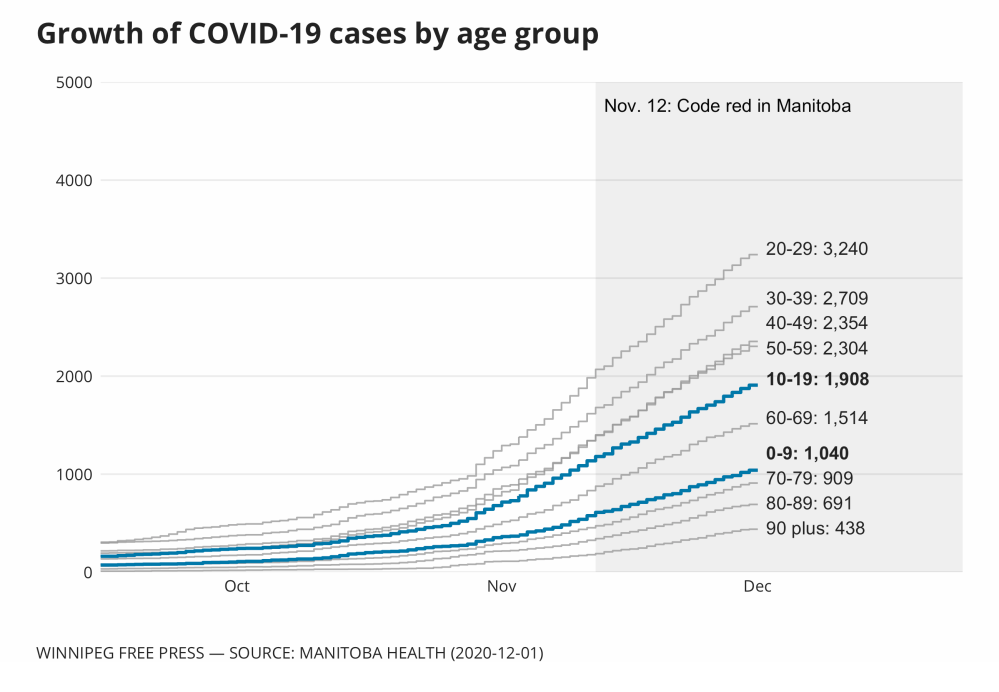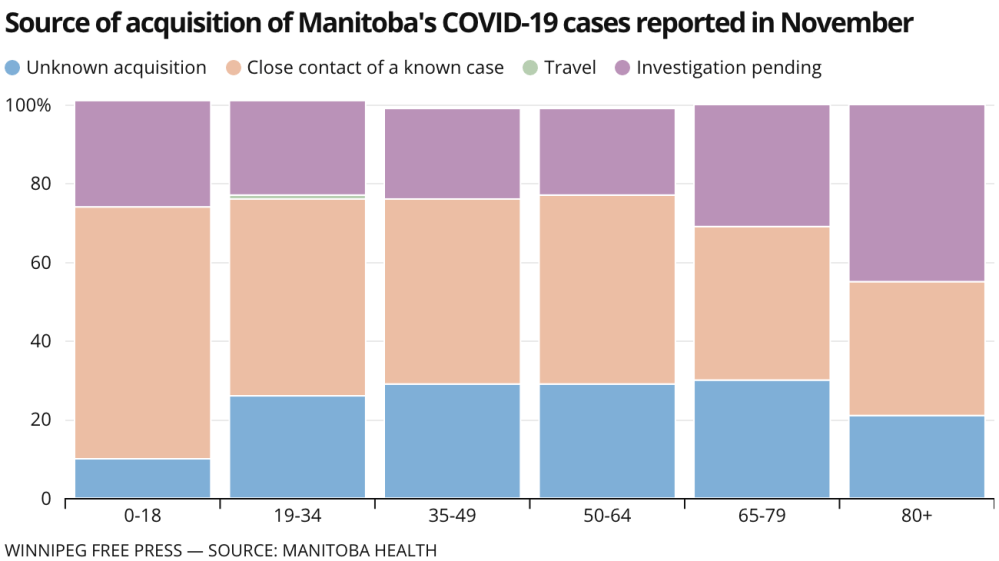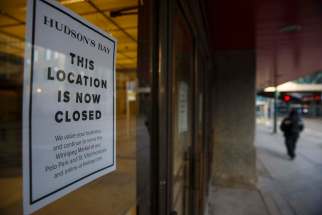‘You can’t see them’: lack of asymptomatic student data drives concern
Read this article for free:
or
Already have an account? Log in here »
To continue reading, please subscribe:
Monthly Digital Subscription
$0 for the first 4 weeks*
- Enjoy unlimited reading on winnipegfreepress.com
- Read the E-Edition, our digital replica newspaper
- Access News Break, our award-winning app
- Play interactive puzzles
*No charge for 4 weeks then price increases to the regular rate of $19.00 plus GST every four weeks. Offer available to new and qualified returning subscribers only. Cancel any time.
Monthly Digital Subscription
$4.75/week*
- Enjoy unlimited reading on winnipegfreepress.com
- Read the E-Edition, our digital replica newspaper
- Access News Break, our award-winning app
- Play interactive puzzles
*Billed as $19 plus GST every four weeks. Cancel any time.
To continue reading, please subscribe:
Add Free Press access to your Brandon Sun subscription for only an additional
$1 for the first 4 weeks*
*Your next subscription payment will increase by $1.00 and you will be charged $16.99 plus GST for four weeks. After four weeks, your payment will increase to $23.99 plus GST every four weeks.
Read unlimited articles for free today:
or
Already have an account? Log in here »
Hey there, time traveller!
This article was published 01/12/2020 (1836 days ago), so information in it may no longer be current.
Public health officials insist COVID-19 transmission in schools is limited, but one epidemiologist questions the data — and lack thereof — being used to back that claim.
Dr. Brent Roussin has yet to waver from his steadfast belief schools are safe places for K-12 students in Manitoba, despite a provincial test positivity rate that has reached upwards of 14 per cent in recent days.
School outbreaks in Manitoba
Six schools in Manitoba have reported COVID-19 outbreaks since the start of the school year.
While the province suggested at the start of the school year that an outbreak would be an instance where at least two cases were linked in a school, a spokesperson told the Free Press last week an outbreak is declared if there is widespread transmission in a school.
“Outbreaks are not commonly declared if there are multiple cases in one classroom and all close contacts can be identified,” the spokesperson said.
Six schools in Manitoba have reported COVID-19 outbreaks since the start of the school year.
While the province suggested at the start of the school year that an outbreak would be an instance where at least two cases were linked in a school, a spokesperson told the Free Press last week an outbreak is declared if there is widespread transmission in a school.
“Outbreaks are not commonly declared if there are multiple cases in one classroom and all close contacts can be identified,” the spokesperson said.
For instance, that means despite at least five cases being identified in one classroom at General Vanier School in Winnipeg last week, the situation has not been deemed an outbreak.
The province declined to comment on the scenario, saying officials only share information about a site of exposure if there is possible public health risk, “to ensure the most privacy possible.”
A document titled, “Interim Guidance and Public Health Measures — Managing COVID-19 cases and contacts in Community” on the Shared Health website, which was last updated Nov. 24, indicates when a school’s level on the pandemic response system should be downgraded.
The restricted (code orange) level indicates transmission within a school, while “widespread uncontrolled transmission” is marked by a critical (code red) phase.
Schools are to remain in the caution (code yellow) area if close contacts are identified and excluded from the school for self-isolation, as well as if transmission does not extend beyond the cohort, the document states.
Only when multiple cohorts are self-isolating does a school move to orange, according to the document.
A school will enter red if the school self-isolates and converts to remote learning.
— Maggie Macintosh
The chief provincial public health officer has repeatedly said, as he reiterated during a news conference Tuesday: “We’re not seeing a lot of transmission in schools.”
Amy Greer, an epidemiologist at the University of Guelph, has heard similar rhetoric in Ontario since students returned to school this fall. She isn’t quite as confident as Roussin or the leadership in her home province.
“We haven’t really looked,” said Greer, who researches the introduction, spread, dynamics and control of infectious diseases in populations.
“If many, many children are asymptomatic, you’re not going to know. You can’t see them. You can’t see that you have an issue if many of those children are asymptomatic, unless you do more targeted surveillance and testing to see what’s actually happening in those classes that have had an exposure.”
“If many, many children are asymptomatic, you’re not going to know. You can’t see them.” – Epidemiologist Amy Greer
The general scientific consensus is children under 10 who become infected with SARS-CoV-2 are less likely to become severely ill and spread it to others in comparison to older patients.
Early evidence suggested youth are also far less likely to become infected with the novel coronavirus, but growing research shows children are often asymptomatic and thus, infections may go under the radar.
Among recent “red flags” for Greer are the results of a new study of common symptoms in children in Alberta, which was published last week in the Canadian Medical Association Journal.
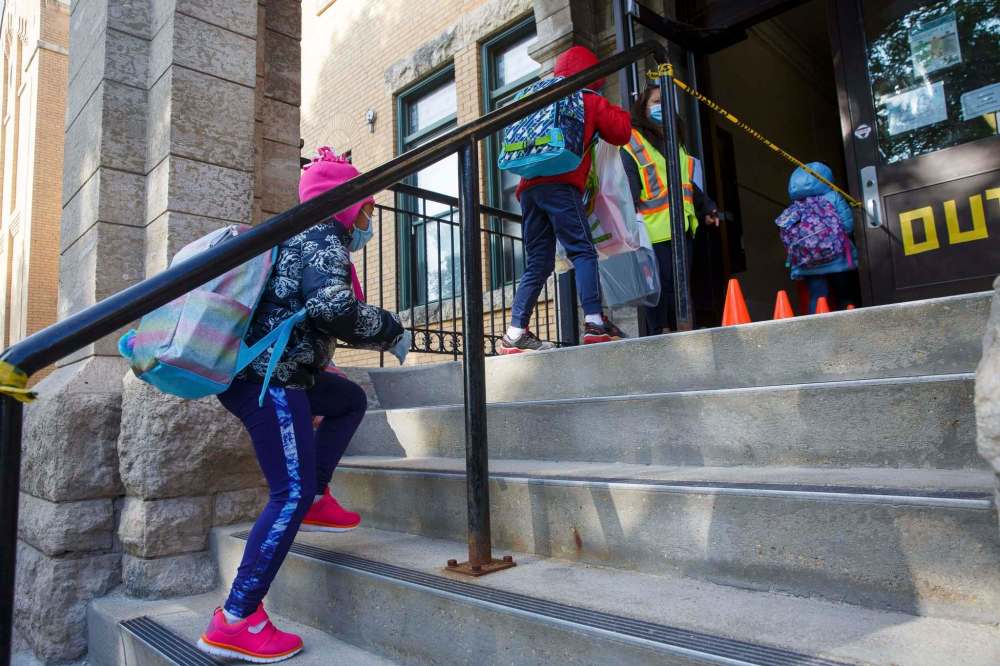
The authors analyzed the results of hundreds of children who underwent testing between April and September. Of the 1,987 who had a positive result, more than one-third reported being asymptomatic.
That means 36 per cent of students who are infected pass a self-screening test and the preventative “half-measures” — Greer’s definition of the back-to-school approach, citing politicians’ decisions not to cap class sizes or upgrade ventilation systems, despite expert recommendations — are the last line of defence, she said.
Meantime, Greer said there are many instances where adults contract the virus and it is difficult to attribute where they became infected. One explanation could be that an asymptomatic student brought the virus home and by the time a parent shows symptoms and the household gets tested, the student receives a negative result because they have recovered, she said.
“I’m uncomfortable saying transmission (in schools) is low, because I don’t think we have the right data.”
Last week, Ontario unveiled a voluntary testing program for asymptomatic students and staff in regions with high infection rates.
“I don’t think any scientist believes there’s a magic COVID eraser in schools.” – Infectious disease modeller Caroline Colijn
A public school pilot in Thorncliffe Park, a Toronto neighbourhood that has a 16 per cent positivity rate, has since found four per cent of the school had COVID-19, including 18 students and one staff member.
When pressed about whether Manitoba would follow suit, Roussin said Tuesday such an initiative would require more testing capacity, so the province has no immediate plans to implement a similar pilot.
While Greer acknowledged the pilot will result in more data collection, she said contract tracers should ideally be following up with and ensuring all students and staff who have been exposed to the virus get tested, even if they feel healthy.
The widespread testing of children for antibodies would also be helpful data to collect to understand how transmission is occurring in schools, she said.
Caroline Colijn, an infectious disease modeller at Simon Fraser University, echoed Greer’s comments during a phone call from Burnaby, B.C. “I don’t think any scientist believes there’s a magic COVID eraser in schools.”
She suggests investigators document the environments in which school clusters and outbreaks occur to determine what factors contribute to them.
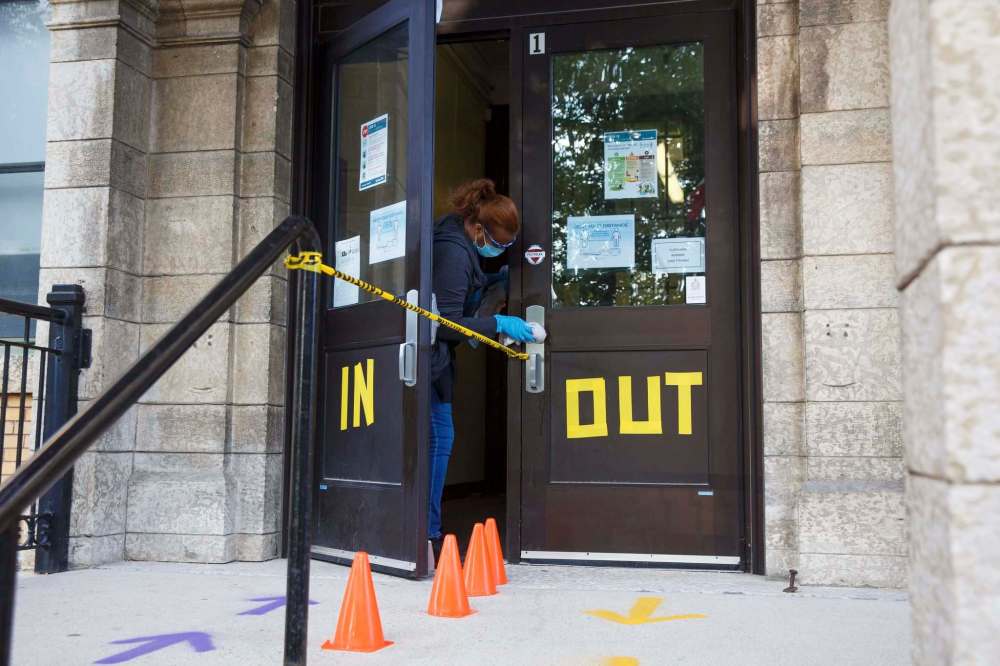
Colijn added it is key officials be transparent with families about what’s going on in schools, in order to maintain trust in the pandemic response.
Upwards of 330 Manitoba schools have recorded a COVID-19 exposure to date, according to a spreadsheet compiled by an anonymous parent who draws from provincial data, news reports, and crowdsourcing.
The spreadsheet has started to beat the province at making exposures public.
maggie.macintosh@freepress.mb.ca
Twitter: @macintoshmaggie

Maggie Macintosh reports on education for the Winnipeg Free Press. Funding for the Free Press education reporter comes from the Government of Canada through the Local Journalism Initiative.
Our newsroom depends on a growing audience of readers to power our journalism. If you are not a paid reader, please consider becoming a subscriber.
Our newsroom depends on its audience of readers to power our journalism. Thank you for your support.
History
Updated on Tuesday, December 1, 2020 7:51 PM CST: Adds graphic

